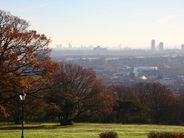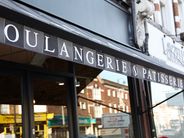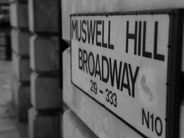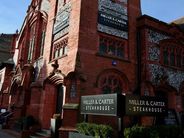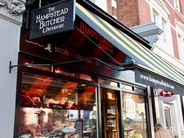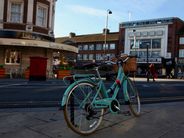
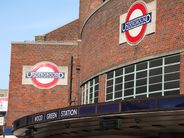
Haringey
Average sold price last 12 months
£672,671
What's it all about?
The large swathe of north London - now covered by the London Borough of Haringey - remained largely rural until the 18th century, before the arrival of the railways in the Victorian era led to quickfire development. By 1900, many of the borough’s distinct neighbourhoods had been firmly established. Haringey encompasses some of most desirable residential areas in London, including Muswell Hill, Crouch End and Highgate, as well as the up-and-coming pockets, such as Tottenham and Wood Green. 25 per cent of Haringey is made up of parks, woodland and green space, including the Tottenham Marshes’ section of the Lee Valley, making many of its neighbourhoods a popular choice for families.
Fact file
- The borough has won Green Flag status for eight of its parks – the highest number awarded to any London borough.
- Green Lanes, now a hub of London’s Turkish, Kurdish and Cypriot communities, was once a drovers’ route for taking cattle from the fields of Hertfordshire to the meat market at Smithfield.
- It is said Laurel and Hardy once stayed at the Queen’s Hotel (now the Queen’s gastropub) on Tottenham Lane, when they performed at the now demolished Crouch End Hippodrome.
Architecture and property
Haringey encompasses a variety of styles of London architecture. This includes a mix of gleaming new tower blocks at the Tottenham Hotspur stadium development, huge post-war housing estates, tall Victorian terraces of South Tottenham, and the grand red-brick Edwardian villas of Muswell Hill.
For house price information, please visit our resource centre.
Going out
Eating: Crouch End has a fine range of cafés and restaurants. Modelled on a New York deli, Max’s Sandwich Shop on Crouch Hill is open evenings from Wednesday to Sunday, and its extravagant sandwiches are often cited as the best in town. Green Lanes has countless authentic Turkish ocakbaşı grill restaurants, while Stroud Green Road has a line-up featuring Italian, Indian and Thai restaurants, to name but a few.
Drinking: Tottenham Hale’s Beavertown Brewery has a tap room where you can sample its range of local brews. Also championing local beers is The Beehive, a big family-friendly pub, which holds regular life-drawing classes and DJ nights. In Crouch End, the recently refurbished Harringay Arms has developed into a cosy local with craft beer, cask ales, pizza and gin cocktails on offer. Tucked on a backstreet corner near Finsbury Park, the Faltering Fullback pub is another popular choice for its unique bric-à-brac stuffed interior, a flower-bedecked garden and terraces.
Nightlife: Downstairs at the King’s Head in Crouch End is a fixture on the London comedy and cabaret scene.
Culture: For blockbuster fans there are two multiplex cinemas in Wood Green, Cineworld and Vue. In Crouch End you’ll find the multi-screen Picturehouse and bijou ArtHouse Crouch End. The Everyman Muswell Hill is another option. The purpose-built Bernie Grant Arts Centre in Tottenham has a diverse programme of cinema, theatre, comedy and dance.
Events: Finsbury Park is a major festival and outdoor concert venue with a packed summer schedule of big-name events. The annual Crouch End Festival is one the country’s biggest community-organised arts shindigs, celebrating local talent in music, film, dance, spoken word, the visual arts and drama.
Local highlights
- A landmark surrounded by parkland and known for its panoramic views of London, Alexandra Palace – known affectionately as ‘Ally Pally’ – is beloved of locals. The original ‘palace of the people’ was built at the height of Victorian pomp in 1873, although it had to be rebuilt after a probable fire. The site of the world’s first regular TV broadcast in the 1930s, the palace is now a venue for events, concerts, sporting contests and exhibitions. In addition to an ice rink, boating lake and pitch and putt, the recently reopened theatre has added to the attractions here.
- Crouch End’s Park Road Lido is a heated outdoor pool. One of the few 50m-long pools in London, it has been enhanced in recent years by new water features and café – making it a firm family favourite.
- The long-running Alexandra Palace Farmers’ Market takes place on the edge of the park every Sunday. Over 40 stalls of fresh produce, rare-breed meats, artisan baked goods, street food and locally produced juices, honey and jams, make it the biggest and most popular in London.
Green spaces
In an area with plenty of parks, recreation grounds and open spaces, the ancient Highgate Wood stands out as one of the best-loved local spots for a scenic wander, with a large playground and excellent café on site. The Parkland Walk, a 4.5-mile winding wooded trail, follows an old railway line through the borough from Ally Pally to Finsbury Park.
Changing times
The area around Tottenham Hale tube and rail station, once largely industrial, has seen large-scale regeneration and flat-building. The redevelopment of White Hart Lane, home of Tottenham Hotspur Football Club, includes a public square, leisure facilities, a hotel, conference centre and over 500 new homes.
Transport
Rail: Haringey has a number of stops on the London Overground network. White Hart Lane, Bruce Grove and Seven Sisters are on a direct line into Liverpool Street, taking around 23 minutes, 21 minutes and 20 minutes respectively. Tottenham Hale, meanwhile, offers a 15-minute link to Liverpool Street. Trains stopping at Bowes Park, Hornsey, Alexandra Palace and Harringay go onto Old Street and Moorgate. London Overground stations at South Tottenham, Harringay Green Lanes and Crouch Hill connect with Barking in the east and Richmond in the west.
Tube: Well-served by the tube, Haringey has stops on the Victoria line at Tottenham Hale and Seven Sisters. Bounds Green, Wood Green and Turnpike Lane are all on the Piccadilly line, and Highgate is on the Northern line.
Bus: Buses passing through from Wood Green include the 141 into Old Street, the City and London Bridge, the 29 to Trafalgar Square and 67 to Shoreditch and Aldgate. From Tottenham, several buses travel down the A10 to Stoke Newington and the City, including the 149 to London Bridge, and the 243 and 76 to Waterloo (all 24-hour).
Road: The A10 cuts through the east of the borough offering a major route into the City, while the A1 Archway Road goes to Angel and offers a link to the A406 North Circular.
Cycle: Cycling facilities, such as cycle parking, are improving throughout the borough. Many routes can be plotted through parks and quieter roads. Cycle Superhighway 1 runs from Liverpool Street to White Hart Lane train station.
Getting away: Buses and trains to Liverpool Street mainline station are frequent and it is easy to connect with King’s Cross St Pancras and Euston via the Victoria line. The Stansted Express stops at Tottenham Hale four times an hour, taking just over half an hour to reach the airport.
Education
Haringey has over 50 primary schools, 12 secondary schools, four special schools and a pupil support centre. At primary level, Chestnuts, St Mary’s Priory RC, North Harringay, South Harringay, Woodberry Down, Coleridge, Weston Park and Rokesly Juniors are all well regarded. Of the state secondaries, the co-educational Skinners’ Academy opened in the south of the borough in 2010 and has state-of-art facilities. Highgate Wood is also a popular choice for 11-16 year olds in the Crouch End area. The foundation Fortismere School, also co-ed, is known for its academic and sporting attainment levels and is the secondary school of choice in the Muswell Hill neighbourhood.
For more information on schools in this area, please see our education resource.
Pop into your nearest KFH branch to talk to our local experts.
Find a property
Looking for a property valuation?
Get an accurate, no-obligation valuation from our local experts.
